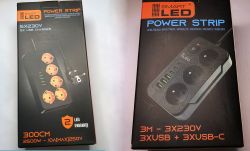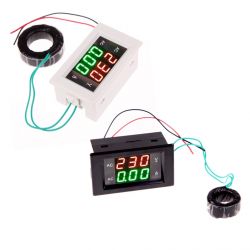Hello, my dear electrode colleagues.
Today I decided to present you a cheap Chinese voltmeter and ammeter, in one neat panel housing. The purchase cost is about PLN 6
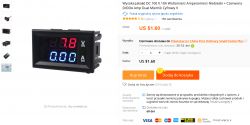
I decided to take this step due to the fact that in a certain thread on the forum, there is a discussion about the accuracy of measurements of this type of meters. Gentlemen, they are shouting over each other with arguments, but somehow no one has checked the reality. Even if he did, he didn't show the results.
Let's start with what the manufacturer says, because we must have a reference point.
1. Of course, "high quality" is in the first place .
.
2. Next, this - let's call it conventionally and for the purposes of this article - "multimeter" prides itself on measuring voltage in the range of 0-100V DC.
3. The ammeter should indicate correctly in the range of 1-10A, which the seller clearly indicates and asks not to leave negative reviews due to inaccuracies in the range of less than one Ampere.
The fact that the ammeter is already activated at 0.01A, but its indications in the range of up to one Ampere do not match the "real" ammeter. However, in the case of my copy, the indications above one Ampere were also not very accurate.
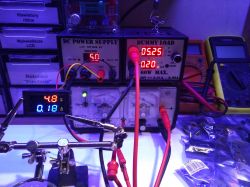
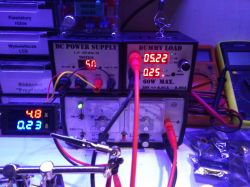
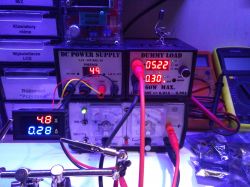
Sequentially 200mA; 250mA and 300mA. As you can see, it lies on average by 20mA
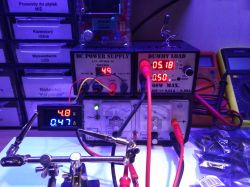
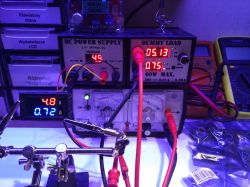
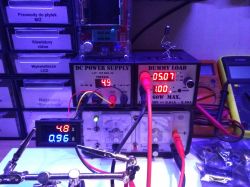
Now 500mA; 750mA and 1000mA. We can see that it distorts even more, because in the first two cases by 0.03A and in the last one even by 0.04A.
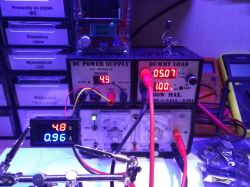
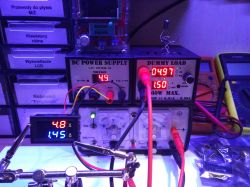
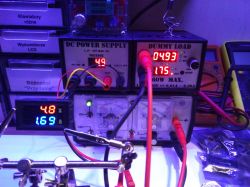
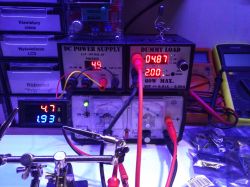
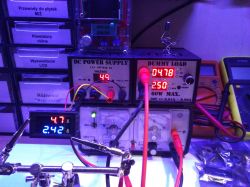
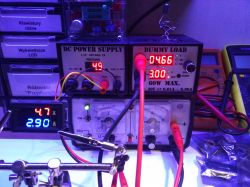
As you can see, at higher currents it is better, but still not very precise.
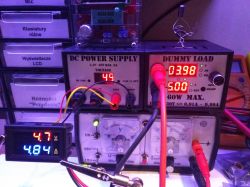
It's just that this is the state after taking it out of the package, and yet we have two tiny "peers" for REGULATION.
After that, it turns out that in the lower ranges it can be quite accurate
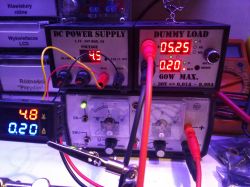
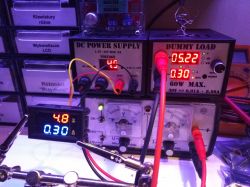
I noticed that a large number of users have problems connecting this device.
It is actually very simple. Just take a look at the diagram below.
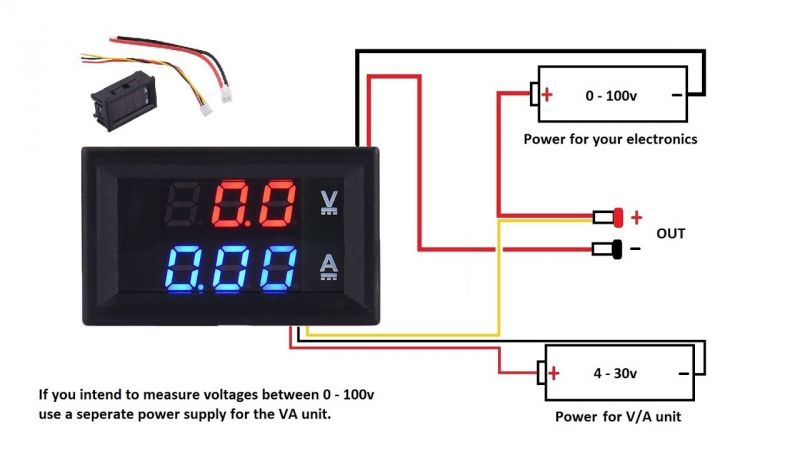
Image source
The voltmeter has the advantage that it can be powered from the measured voltage, if it is not lower than 4V. If you want to measure lower voltages, you should supply power from an external source, for example a 6F22 battery (a bad idea in the case of two, even small LED displays) or a power supply e.g.. plug 5-30VDC with a minimum capacity of 100mA.
Please note that this ammeter works "one way only". Reverse connection will short-circuit the output of the multimeter power supply system, in such a situation, if the power supply system is not protected, it may be dismal ...
I believe that for such money, this "measure" is worth attention. After a child's play of "calibration", the results on the display can exactly match the indications of a "real" voltmeter (for which you have to pay at least ten times as much), even in the range of less than one Ampere, as shown in the pictures above.
Best regards.
CMS
Today I decided to present you a cheap Chinese voltmeter and ammeter, in one neat panel housing. The purchase cost is about PLN 6

I decided to take this step due to the fact that in a certain thread on the forum, there is a discussion about the accuracy of measurements of this type of meters. Gentlemen, they are shouting over each other with arguments, but somehow no one has checked the reality. Even if he did, he didn't show the results.
Let's start with what the manufacturer says, because we must have a reference point.
1. Of course, "high quality" is in the first place
2. Next, this - let's call it conventionally and for the purposes of this article - "multimeter" prides itself on measuring voltage in the range of 0-100V DC.
3. The ammeter should indicate correctly in the range of 1-10A, which the seller clearly indicates and asks not to leave negative reviews due to inaccuracies in the range of less than one Ampere.
The fact that the ammeter is already activated at 0.01A, but its indications in the range of up to one Ampere do not match the "real" ammeter. However, in the case of my copy, the indications above one Ampere were also not very accurate.



Sequentially 200mA; 250mA and 300mA. As you can see, it lies on average by 20mA



Now 500mA; 750mA and 1000mA. We can see that it distorts even more, because in the first two cases by 0.03A and in the last one even by 0.04A.






As you can see, at higher currents it is better, but still not very precise.

It's just that this is the state after taking it out of the package, and yet we have two tiny "peers" for REGULATION.
After that, it turns out that in the lower ranges it can be quite accurate


I noticed that a large number of users have problems connecting this device.
It is actually very simple. Just take a look at the diagram below.

Image source
The voltmeter has the advantage that it can be powered from the measured voltage, if it is not lower than 4V. If you want to measure lower voltages, you should supply power from an external source, for example a 6F22 battery (a bad idea in the case of two, even small LED displays) or a power supply e.g.. plug 5-30VDC with a minimum capacity of 100mA.
Please note that this ammeter works "one way only". Reverse connection will short-circuit the output of the multimeter power supply system, in such a situation, if the power supply system is not protected, it may be dismal ...
I believe that for such money, this "measure" is worth attention. After a child's play of "calibration", the results on the display can exactly match the indications of a "real" voltmeter (for which you have to pay at least ten times as much), even in the range of less than one Ampere, as shown in the pictures above.
Best regards.
CMS
Cool? Ranking DIY



